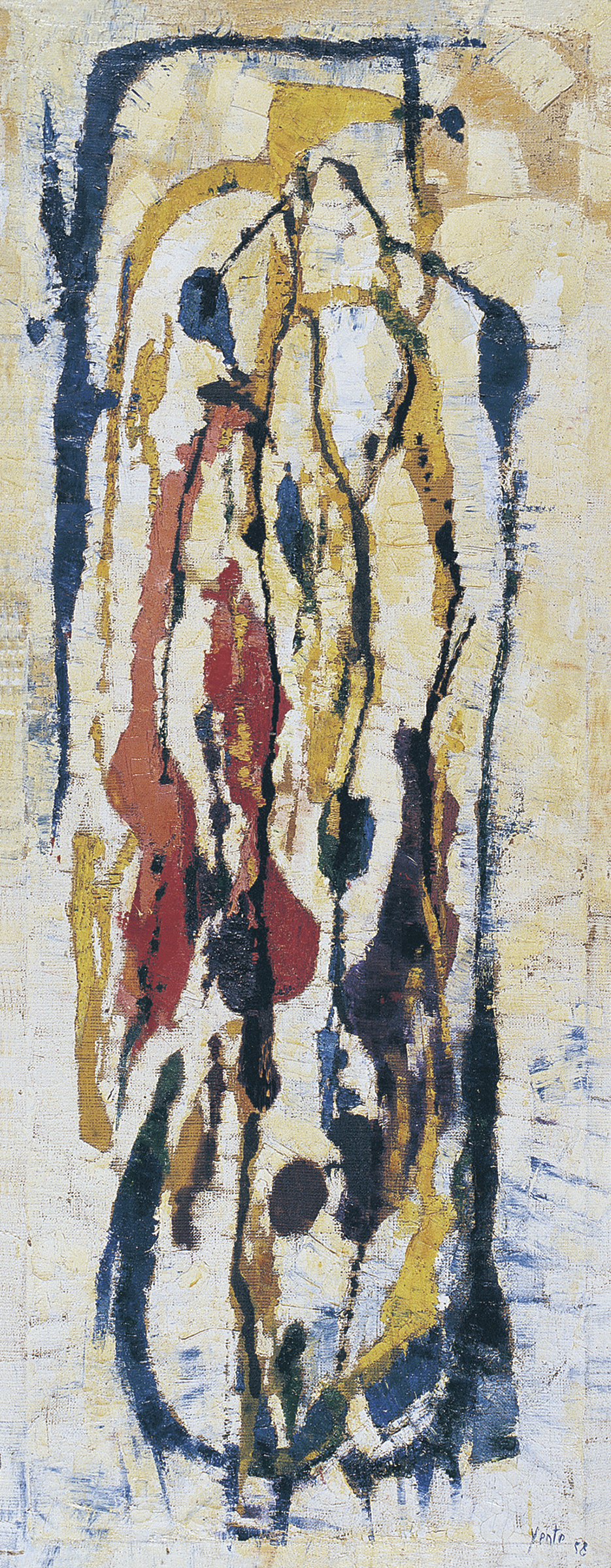She was one of the pioneers of abstract art in Argentina. She made her first abstractions in 1937 and was the first woman artist in the country to adhere to this trend. For more than fifty years she sustained these manifestations, alternating them with figurative works. Her production included geometric paintings and objects from the 30’s and 40’s, free abstract works from the 50’s, expressionist figurations that predominated in the following decades. Continuously migrating techniques and media: drawing, painting, object, collage, assemblage, textile, celotex and numerous artist’s books, often reconciling abstraction and figuration. By 1945 she had begun to make reliefs and constructive objects in celotex, a material that can be easily sculpted. She made abstract tapestries with coloured wools and threads combined with paint between 1956 and 1959. This is when she turned to free, non- figurative painting of small impasto brushstrokes, something she called “abstract impressionism”. Between 1938 and 1984, she created over twenty illustrated books, all unpublished. They were based either on preexisting stories or on her own writings, some of which were autobiographical. In these works, short phrases structure stories that mainly unfold through images. She participated at the IV Bienal de São Paulo in 1957, and she will represent Argentina at The Jersualem Biennale in 2023. Her work forms part of the following collections: The Museum of Modern Art – MoMA; Museo de Arte Latinoamericano de Buenos Aires – MALBA; Museo de Arte Moderno de Buenos Aires – MAMBA; Museo Castagnino + Macro; Museo de Artes Plásticas Eduardo Sívori; Museo Provincial de Bellas Artes de Santa Fe Rosa Galisteo de Rodríguez; Museo Judío de Buenos Aires; The Israel Museum, Jerusalén; and others, as well as outstanding private collections in Argentina, Chile, Italy, Germany, Israel and United States.


 Crenovich Eugenia (Yente)
Crenovich Eugenia (Yente)